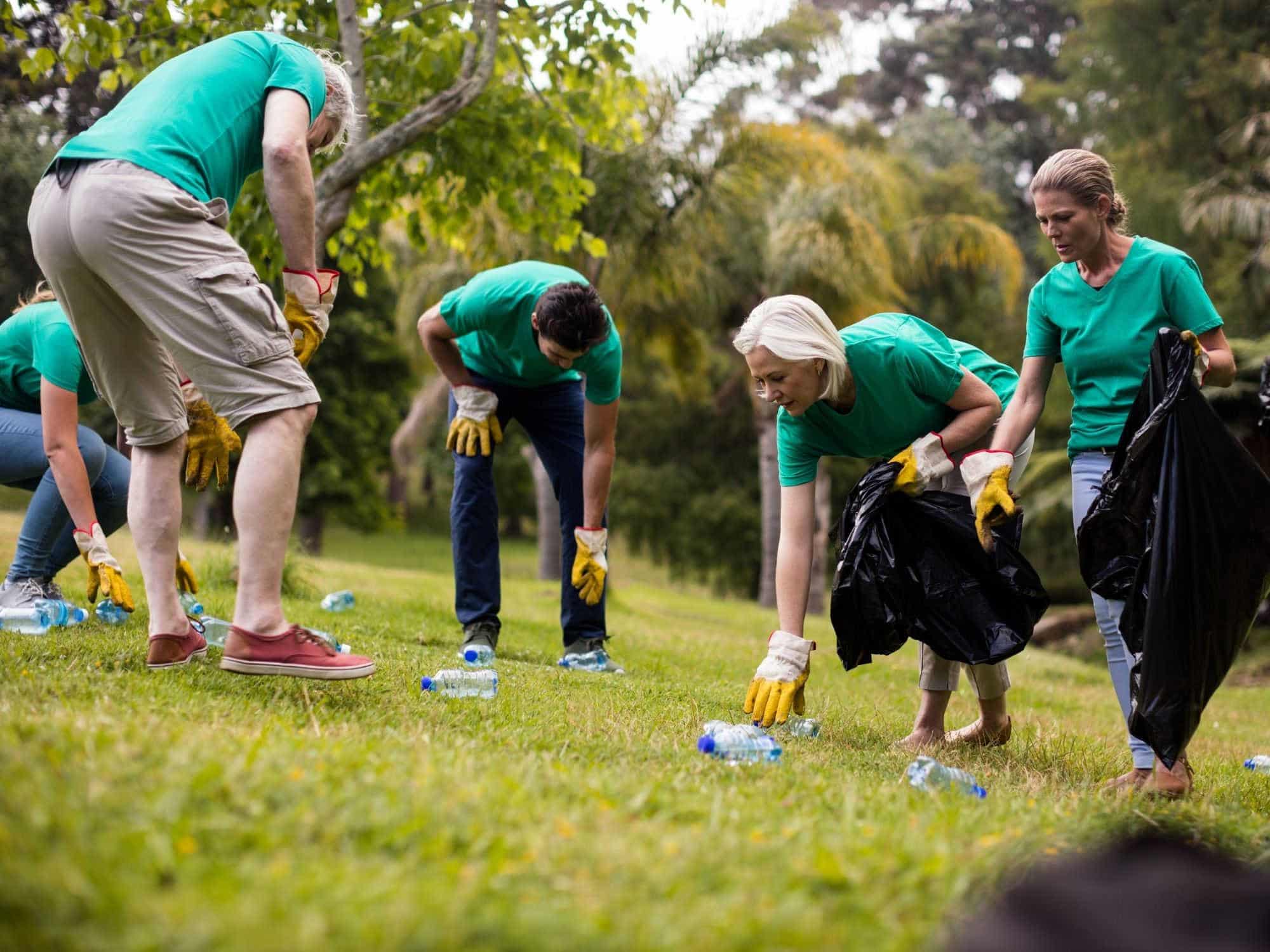How to Support Your Local Environmental Charity
To support the running costs of Moral Fibres, this post contains affiliate links. This means Moral Fibres may earn a small commission, at no extra cost to readers, on items purchased through these links.
Show your support for your local environmental charity, with these seven ways to help that go beyond simply volunteering or donating money.
I don’t talk a lot about my day job very often on here. So you might be surprised to learn that I have spent two-thirds of my working life – a combined total of 13 years – working for different environmental charities. I’ve worked for four in total, including charities that help the local community take action on climate change.
In my experience of working with various sustainability charities, I’ve noticed that despite their unique missions, they all encounter similar challenges. Therefore, I thought it would be helpful to compile a guide for how we, as individuals, can best support the crucial environmental work these charities do. So, below, you’ll find a range of suggestions to aid your local environmental charity.
How to Support Your Local Environmental Charity

I’ve put together seven non-exhaustive ideas on how you can support your local environmental charity. I’m not for a second suggesting that you do every single thing here. But even taking one or two points on board where and if you can, would be beyond useful to your local charity.
- Follow Them On Social Media
- Like And Share Their Social Media Posts
- Go Along To Their Events & Classes
- Take Advantage Of Their Services
- Fill In Their Evaluation Forms
- Donate To Them
- Volunteer For Them
1. Follow Them On Social Media
I’ve lost count of the number of times over the years that I’ve been to a community event on behalf of the charity that I work/worked for, to be told by people “Oh, I didn’t know you did that”.
It can be hard for small sustainability charities to get the word out about all the great things they are doing, such as community litter picks or beach cleans.
Whilst large charities do have big budgets for advertising campaigns, your little local environmental charity probably doesn’t. Therefore, by following them on social media or signing up for their newsletter, you’ll get all the news at no additional cost to the charity.
2. Like And Share Their Social Media Posts
Facebook is a huge pain for charities. You spend a lot of time building up your followers, and then Facebook only shows your post to a small percentage of your followers. To show your post to more of your hard-earned followers, Facebook wants money and lots of it.
Whilst this is practical on the odd occasion, it’s not practical for the charity to pay to boost every post, event, or class.
Liking posts on Facebook means these posts often show up in your friend’s feeds. And sharing posts helps widen the reach of the post without the need for the charity to spend funds on Facebook-boosted posts. Funds that could be used elsewhere to support the charity, rather than lining Mark Zuckerberg’s already deep pockets.
3. Go Along To Their Events & Classes

Many environmental charities run events and classes. From upcycling courses, sewing classes, growing your own vegetable classes and workshops, cycling lessons, bike maintenance workshops, waste reduction workshops, and more. Environmental charities can offer a wide range of services depending on the skills of their staff, their volunteers, or their current funding.
Many of these courses or events are free or offered at heavily subsidised rates. And some even run pay-what-you-want courses for people on limited incomes.
If they are running a course or an event that you are interested in then do try and pop along. The more people that take part, the more people in the community learn useful skills, building community resilience. It also means the charity is more likely to get future funding to run similar events and classes. This really is a key way to support your local environmental charity, whilst learning something new.
4. Take Advantage Of Their Services
You know the saying, use it or lose it. This applies only too well to environmental charities. If your local charity runs a service you are interested in then take advantage of it.
For example, if you are interested in DIY and your local charity runs a tool library, join it and make use of their inventory. If you are keen to do more walking, and the charity offers led walks, join in. And if you are interested in gardening or growing your own and your local charity runs a community garden, get involved! If people don’t take part, then the charity is unlikely to be able to keep offering those services.
5. Fill In Their Evaluation Forms
From someone who has worked for many environmental charities, believe me when I say if we could get away without asking people to fill in evaluation forms or surveys then we would. I have personally found that in some cases they can be huge barriers to participation. This is frustrating when all we want is for as many people as possible to take part in our environmental initiatives.
However, as most environmental charities rely on external funding to be able to carry out their work, then external funders want proof that their money is making positive change. So when someone asks you to fill in a form they’re not being nosey. They’re not checking up on you. It’s not a competition to see how well you’re doing. It’s simply collecting data which is anonymised and then sent to the funder.
If the charity sends you a follow-up survey, please, for the love of all that is pure and holy, fill it in. These can be crucial for the charity to gain further funding to continue doing what they are doing.
6. Donate To Them
If you go on to your local charity’s website, you’re likely to see a “donate” button somewhere on their website.
Donations are so important to charities. Donations are unrestricted funds that can be used in any way to support the charity. Whilst charities often get grant funding, grants are often restricted funds that can only be used for specific purposes. What’s more, some grants cannot be used to support the charity’s core running costs, such as rent or utility bills. Donations can be a real lifeline for small charities.
Money isn’t the only way you can donate to your local charity. If you have any environmental books that you’re not using anymore, then the charity might take them as part of a community lending library. If they have a tool library, then they will probably take donations of old tools. They may even take donations of sewing equipment you no longer need.
Even things that you would otherwise bin can be turned into revenue for charities. Some charities can take old stamps which they can raise funds with. And some charities take old printer cartridges, which they can turn into cash.
Basically, if you are looking to pass something on that may be of use, then get in touch with your local charity to see if it’s something they can utilise.
7. Volunteer For Them
If you have the time and capacity, then consider volunteering for your local environmental charity.
It could be on a practical basis, depending on your skills. This could include:
- Helping out in the community garden.
- Using sewing skills to teach others.
- Using your cycling skills to take out a group of people on a bike ride.
- Using your botany skills to take people out on a foraging walk.
- If you can cook, you could help run a class to teach people how to reduce food waste.
The list is endless. If you have a particular skill, get in touch to see if they can utilise it.
If you don’t have the particular skills the charity is looking for, then there are loads of other ways to get involved. The list is endless – whether that’s helping out with admin, marketing, social media, event photography, helping out at events, and more.
Most charities rely on volunteers giving up a little bit of time to help support their activities. This help can often be home-based if you don’t have the time to help during standard office hours or have limited accessibility. In all the charities I have worked for, I don’t think we have ever turned down someone looking to help out!
If you’re looking for a more specific or formal volunteering arrangement, then sites like Environment Job list a range of volunteering opportunities from across the UK.
Looking For A Charity To Support?
I’ve been busy putting together guides to the best environmental charities around. If you are looking for a charity to get involved with check out these suggestions:
- The best environmental charities in the UK
- The charities that plant trees in the UK
- The charities that support bees in the UK
- The best ocean conservation charities in the UK
The Bottom Line
Supporting your local environmental charity can mean donating money or volunteering, but beyond that, there are heaps of other ways you can help your local charity out. From simply following along on social media, to passing on things you no longer need, or taking part in the events they organise, these are key ways to help keep your local charity going.
PS: here’s a guide I wrote on how to get an environmental job if anyone is interested in a career change, or is still in education.
Found this post useful? Please consider buying me a virtual coffee to help support the site’s running costs.




